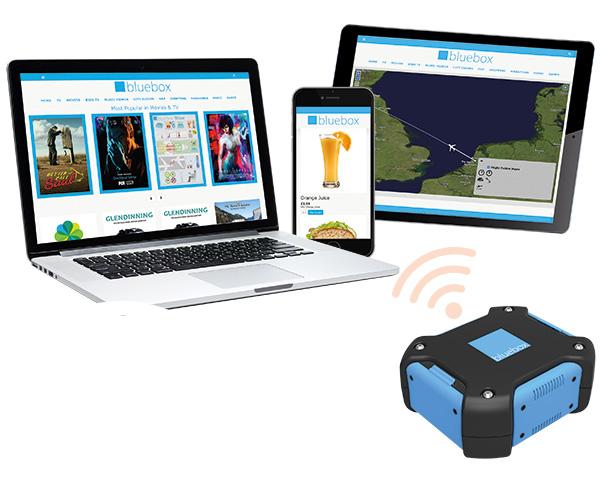
OWG selects Bluebox Wow for IFE
Bluebox Aviation Systems’ wireless IFE solution, Bluebox Wow, will be deployed on OWG’s fleet of Boeing 737 aircraft when the new airline, a subsidiary of Nolinor Aviation, takes its first flight in November flying Canadian vacationers south to Cuba. Bluebox Wow will deliver IFE content, such as app-free DRM movies and TV as well as a moving map, wirelessly to passengers’ own devices.
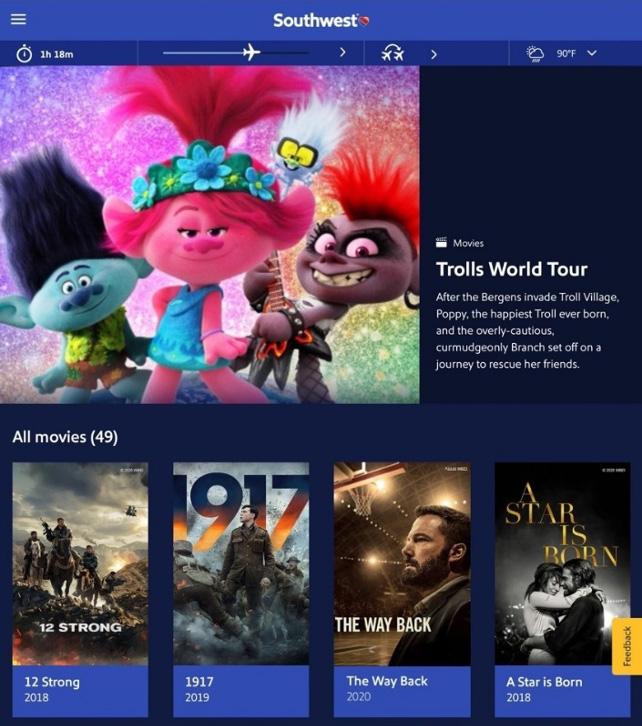
Global Eagle improves Southwest IFE
Global Eagle Entertainment is launching a series of improvements across Southwest Airlines’ Inflight Entertainment Portal, which will allow customers to stream inflight content direct to their smartphone, laptop or tablet without having to download an app before they board.
Hollywood movies and TV series protected under Digital Rights Management (DRM) can now be played on Southwest’s Inflight Entertainment Portal via selected iOS, Android or Windows operating systems on selected browsers. Global Eagle utilizes the latest media encryption standard—Common Media Application Format (CMAF)—to reduce encoding requirements so that multiple DRM technologies can be used on a single video file.
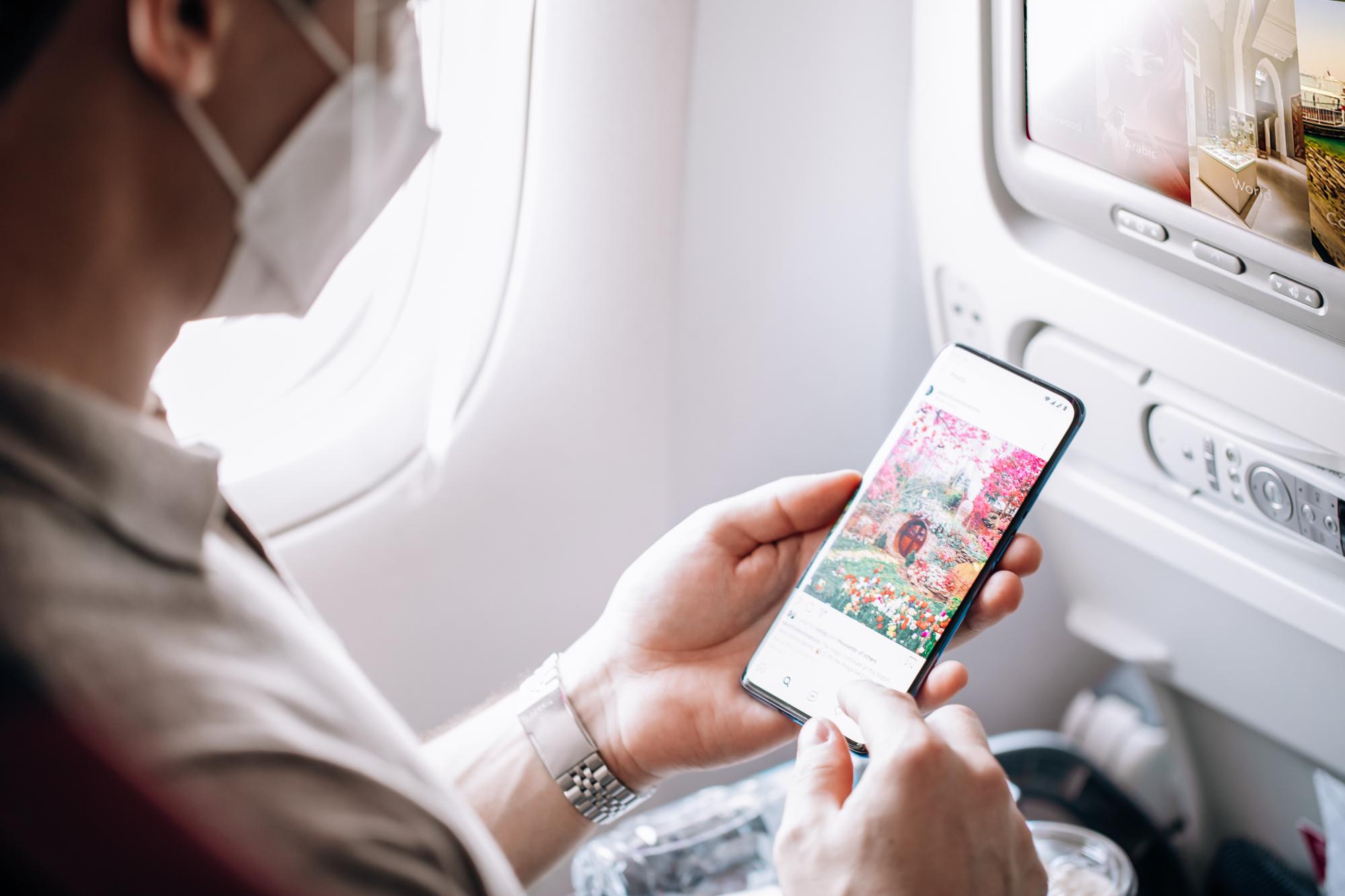
Qatar Airways equips 100 aircraft with GX Aviation broadband
Qatar Airways installed Inmarsat’s GX Aviation broadband service on most of its Airbus A350 and Boeing 777 aircraft.
Since 2018, the Middle East launch customer has equipped 100 of the widebodies—or nearly half of its fleet of 207 aircraft—for the Ka-band satellite service.
Passengers receive one hour of free access to GX Aviation, which Qatar Airways has branded as “Super Wi-Fi.” They then have the ability to purchase access over the course of the flight.
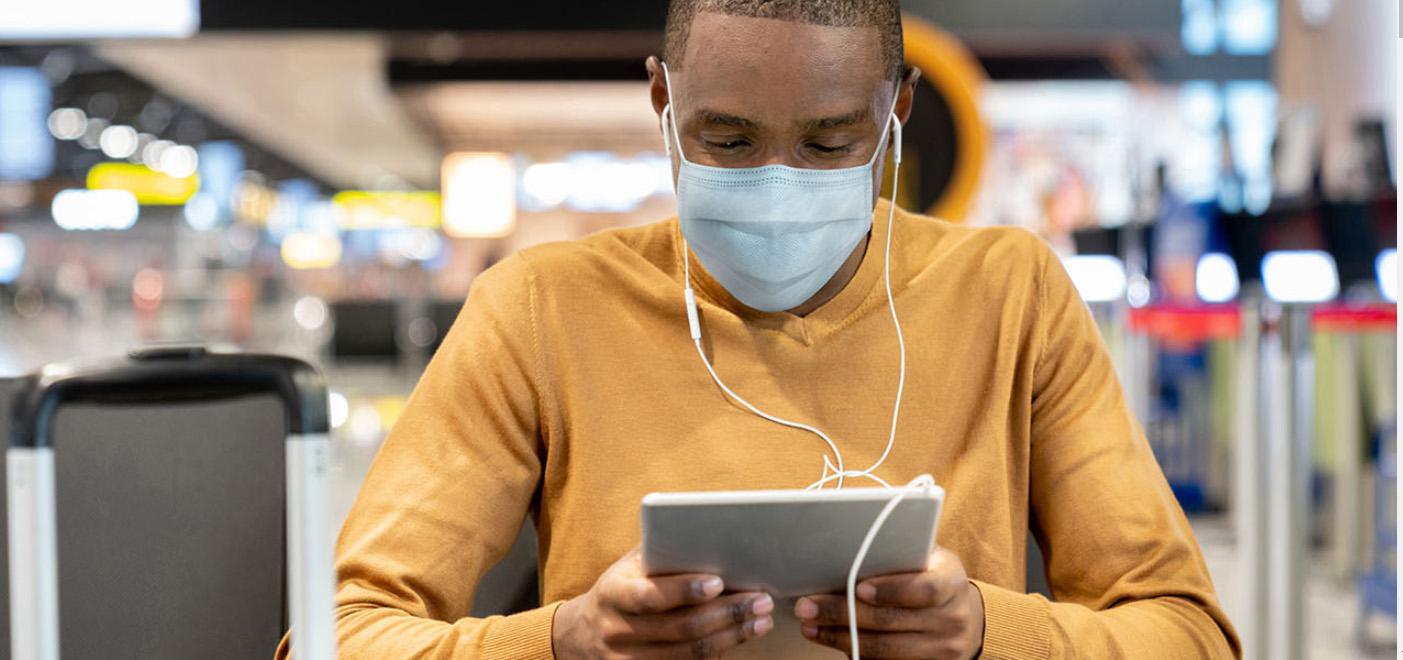
Panasonic Avionics’ ‘Welcome Aboard’ collection puts passengers at ease
Panasonic Avionics unveiled its Welcome Aboard Collection—a selection of inflight products and solutions designed to help airlines address passenger concerns during COVID-19.
The Collection can be customized to an airline’s existing fleet. It consists of both inflight entertainment (IFE) elements and other solutions designed to help augment airlines’ efforts to create a safer and healthier travel experience, while reducing costs and reinforcing their commitment to the passenger and their crew.
Other solutions in the Collection help airlines to reduce touchpoints through smarter “less touch” technology such as Onboard Reader to digitize print publications and Companion App to integrate the passengers’ trusted personal device into the IFE experience. This can help ensure that seat back IFE consoles are complementary to the traveler’s personal devices, thus limiting passengers’ touch while still enabling the full IFE experience.
The Collection also includes solutions to enhance the cabin experience and deliver care through wellness solutions such as the nanoe Air Cleanser, which improves air quality by generating nano-sized electrostatic atomized water particles that can suppress odors and inhibit certain viruses, bacteria and allergens.

AERQ digitizes aircraft cabins
AERQ, a joint venture of LG Electronics and Lufthansa Technik, aims to be a game-changing market leader to digitalize aircraft cabins by providing a new kind of digital ecosystem in and around the aircraft fueled by hardware, software and data. The Hamburg, Germany-based company has brought new products to market, including its Welcome Board product and new IFE offerings.
The AERQ Platform includes touch points such as an Inseat System and Cabin Digital Signage. The Inseat System provides passengers with an exceptional inflight entertainment experience, including integration of their own devices.
The Welcome Board was introduced at the FlyingLab in September 2019. “It can greet passengers onboard the aircraft and functions also to enhance the airline brand while providing passenger relevant information. This technology can also be applied to Ceiling Panels to provide passengers with a customized cabin experience, while the airline can enhance their brand awareness,” the company said.
The perfect example for AERQ’s innovation power is the Transparent Class Divider for aircraft cabins, a state-of-the-art OLED display that divides large cabin environments in a visually appealing manner. It was shortlisted for the Crystal Cabin Award 2020.

LOT expands digital press, replaces print
LOT has introduced a number of changes to its passenger service and in-flight product, which is expected to improve passenger comfort.
In addition to technological changes in communication with the passenger, LOT was one of the first air carriers in Europe to introduce digital press on its boards. More than 1,000 titles can be downloaded via the mobile app 36 hours before departure and up to 6 hours after landing.
In response to the coronavirus pandemic, LOT has replaced paper newspapers and magazines on board and in business lounges with a wide range of Polish and foreign press in a digital version, provided by Media Carrier’s Media Box, which can be used with any internet-capable device; it is not necessary to install an app, register or enter personal data. Passengers use only their own mobile device to read their digital newspaper or magazine, and merely touches the display to download their favorite reading, turn pages or scroll.
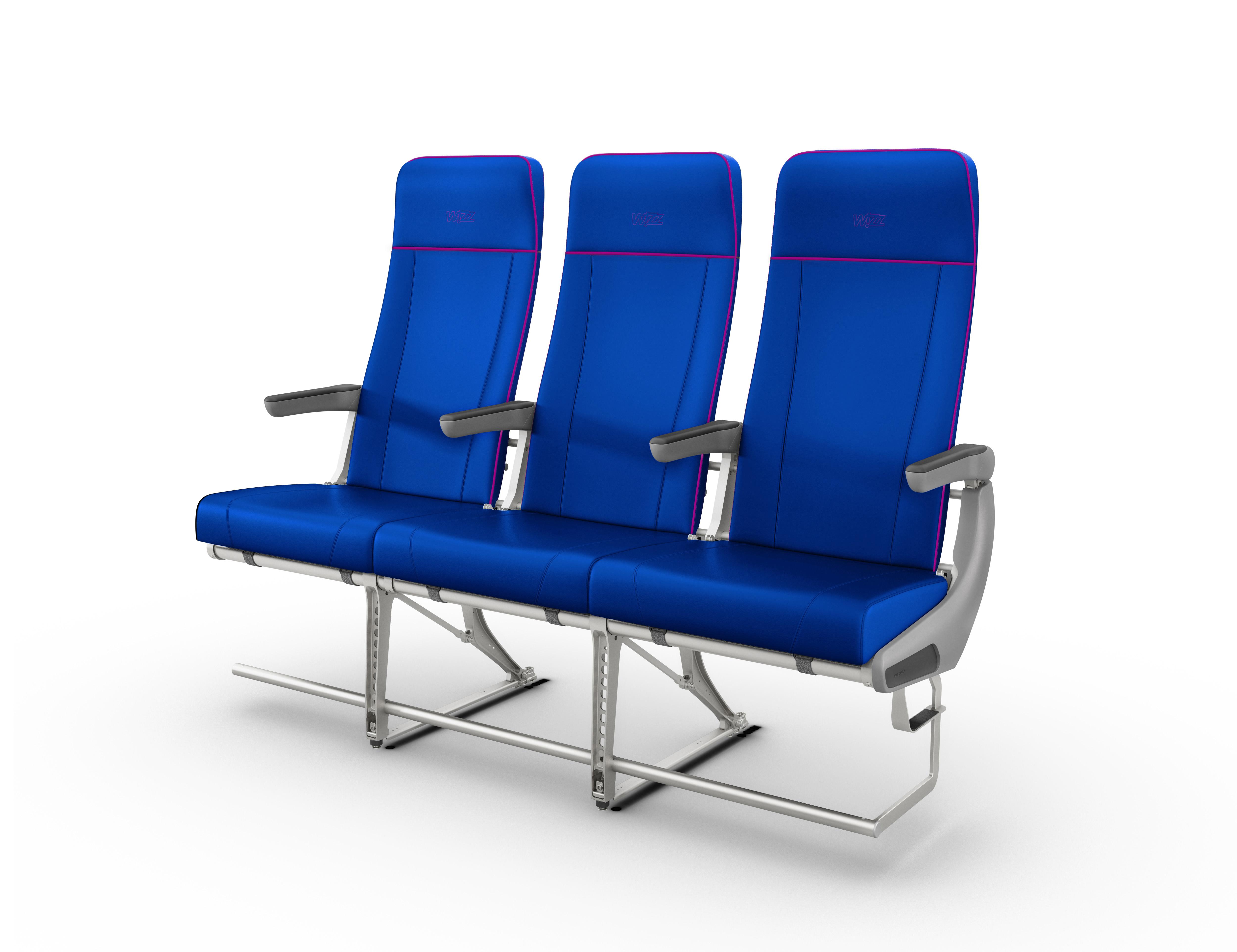
Recaro, Wizz Air partner for new economy seats
Recaro Aircraft Seating has secured a deal with Wizz Air for 31,767 passenger seats, in a partnership that is part of a larger deal with the Indigo Partners portfolio of airlines for nearly 100,000 passenger seats. Recaro said this the company’s largest seat order. The SL3710 economy class seat will be installed on 146 Airbus aircraft starting in 2021. The newest and lightest member of the Recaro economy class seat lineup, the SL3710 economy class seat, weighs approximately eight kilograms. According to Recaro, the seat’s efficient design is comprised of durable and reliable parts, which makes it a cost-effective choice for airlines focused on minimizing fuel and maintenance costs.

Tapis unveils new cabin divider material
New York-based Tapis Corporation released its latest cabin interior material, an advanced softtouch synthetic leather for use in cabin dividers. The 9-series Ultraleather, made in partnership with Ultrafabrics, meets the requirements of heat release and smoke density for vertical surfaces. The 9-series product can be combined with soft touch foams to create a lightweight, flexible divider solution for the future. The material comes standard with anti-microbial, silver ion technology embedded in the surface layers that prevent leaching and efficacy loss. The 9-series is the only polycarbonate product on the market today that is compliant with the flammability requirements for vertical surfaces. The polycarbonate finish is chemically engineered to be resistant to cleaning and disinfection from a host of approved products commonly used in fogging and hydrostatic sprayers. The 9-series can be safely cleaned with alcohol, quaternary ammonium, bleach and hydrogen peroxide-based cleaners without damaging the product. When the material is combined with the correct component materials, it can be thermoformed into complex curves to ensure minimal encroachment into the space of other passengers and allowing full uninterrupted recline between classes. The lightweight buildup allows it to be used successfully with hanging cabin divider styles to ensure maximum airframe compatibility. The anti-microbial technology provides a safe shield for aerosol borne micro-organisms within the aircraft to create a low risk, safe environment for passengers.
The product saw its successful launch with American Airlines on their recent 737-800 upgrades. The class dividers from Jamco America Inc feature a soft eyebrow-type hanging divider with a simple but elegant design. The divider has an increased surface area to allow greater separation within the cabin, further minimizing the airflow and micro-organism transition throughout the cabin. The new class divider solution can be customize

Lseat enables sleep in economy class
Belgian-patented Lseat offers a sleep mode for a small fare markup, which the company believes will convert economy class into the most profitable class for airlines.
The Lseat is designed so the front part of the cushion slides down and a leg and feet holder extend below the seat in front. The seat offers an almost flat position for a comfortable sleep, while distance and pitch between the seat rows remains unchanged. No power assistance or cabin crew assistance is required. “Sleep mode won’t disturb your neighbors; they will still have the same pitch and leg room,” the company stated on its website.
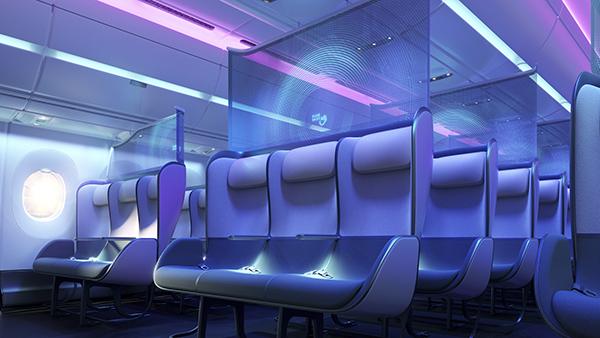
PriestmanGoode unveils new ‘Pure Skies” design
London-based designer PriestmanGoode unveiled a new design concept, “Pure Skies,” is developed around three main factors: personal space, hygiene and a touch-free journey. It also includes a complete review of business and economy cabins, moving away from the notion of “class” to “rooms and zones.”
At the heart of the design is the outdated notion of “class” to denote an area of the cabin. Therefore, the former economy class has been renamed “Pure Skies Zones” and previous business class is called “Pure Skies Rooms.”
Pure Skies Zones include dividing screens in every other row and a staggered seat configuration. IFE screens have been removed in favor of passenger-owned devices; seat-back trays have also been removed, replaced with clip-on meal trays directly from the trolley.
Pure Skies Rooms include a fully enclosed personal space, partitioned by full-height curtains. Each room features gesture-controlled IFE, synched to the passenger’s own device, a completely redesigned seat with minimal split lines and welded fabric seams to eliminate dirt traps; and a modular design concept that provides personal overhead stowage, containing bedding and a personal wardrobe.

Embraer aircraft can now carry more cargo
Embraer has developed cargo transportation solutions for its line of commercial aircraft to address the critical need for more cargo space with fewer commercial flights, which carry both passengers and freight.
ANAC, Brazil’s civil aviation regulatory authority, granted exemption for the carriage of additional freight on Embraer passenger aircraft.
Embraer said it published Technical Dispositions for the ERJ 145 and E-Jets families of commercial jets, including the E-Jets E2s, which explain how to accommodate cabin freight.
“A Service Bulletin is available for the EMB 120. In addition to placing small packages in overhead bins and stowage compartments, cargo items can be placed on each seat, subject to certain restrictions. The payload capacity is significant. For example, a fully loaded 96-seat E190 can carry 6,720 lb. (3 metric tonnes) of cabin freight in addition to under floor cargo. A 118-seat E195 can carry 8,260 lb. (3.75 metric tonnes). Customers can opt for a floor-mounted freight configuration if their cargo cannot fit on passenger seats. This solution permits the removal of up to 70% of the passenger seats, with the remaining areas accommodating for items on the cabin floor. Freight must be contained in approved netting that attaches to the inboard and outboard seat tracks. This solution has already been developed for a first generation E195 jet for Azul Cargo, in Brazil. Cabin payload capacity for the ERJ145 is up to 1,750 lb. (0.8 metric tonnes) and up to 5,194 lb. (2.36 metric tons) for the E190-E2. For customers needing even more capacity, Embraer may offer a Service Bulletin for full cargo configurations, as has been done for the EMB 120. These layouts give operators the flexibility to carry larger floor-mounted freight items in the cabin.”
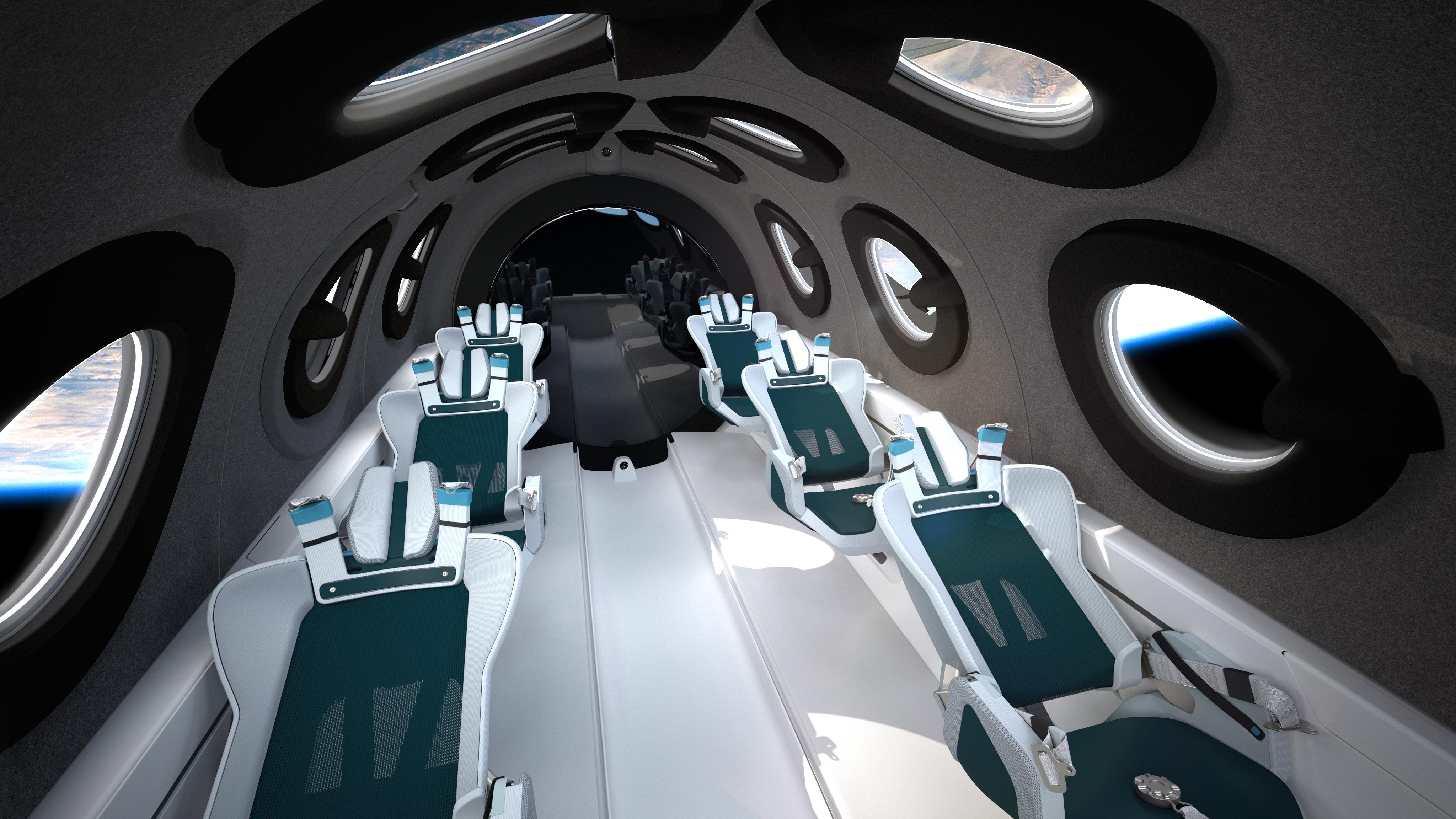
Virgin Galactic’s SpaceshipTwo cabin interior is out-of-this-world
Virgin Galactic, a pioneer in commercial spaceflight for private individuals and researchers, revealed the cabin interior of its first SpaceshipTwo vehicle, VSS Unity.
The Virgin-branded customer experience aims to develop a spaceflight system designed to offer customers a “unique, multi-day, transformative experience. This culminates in a spaceflight that includes views of Earth from space and several minutes of weightlessness that will launch from Spaceport America, New Mexico,” the company stated.
The cabin interior, developed in collaboration with London design agency Seymourpowell, is driven by the astronaut experience, including:
- Individually sized, reclining seats for G-force management and float zone volume;
- Automated mood lighting harmonizes with each flight phase;
- Personal seat back screens connect astronauts to live flight data;
- Cabin architecture facilitates effortless movement in weightlessness;
- 16 cameras provide high definition footage and stills;
- 12 cabin windows for astronauts to gaze at Earth from; and the
- Largest mirror in a spaceship cabin, which reflects the real-time astronaut experience.
Virgin Group founder Richard Branson said: ‘’When we created Virgin Galactic, we started with what we believed would be an optimal customer experience and then built the spaceship around it. We will continue with that ethos as we expand our fleet, build our operations and underpin Virgin Galactic’s position as the Spaceline for Earth. This cabin has been designed specifically to allow thousands of people like you and me to achieve the dream of spaceflight safely—and that is incredibly exciting.’’

Vistara’s first A321neo offers lie-flat beds
India’s Vistara received its first Airbus A321neo, which will be used for international expansion. The aircraft is part of the order of 50 from the Airbus A320 family signed in 2018. The airline said the type makes Vistara the first airline in South Asia to offer lie-flat beds on a narrowbody aircraft.
The aircraft features a three-class cabin configuration, with a total of 188 seats: 12 in business class, 24 in premium economy and 152 in economy. According to Vistara, all seats feature 4-way adjustable headrests and movable armrests, as well as seatback entertainment and in-seat power/USB charging ports. The airline’s IFE system features a content-rich multimedia library that total up to 700 hours of content, a superior map experience with 3D flight path map and flight tracker. The aircraft is also equipped with wireless connectivity, which will allow passengers to access the internet through onboard Wi-Fi, 3G mobile data through GSM and GPRS for SMS and MMS services, subject to necessary regulatory approvals.
Vistara’s business class seats on the A321neo are upholstered in premium, genuine leather that recline into fully flat beds. They come with 16” high definition touchscreen in-seat TV, a video handset to navigate the IFE system and generous stowage space. The seats in premium economy and economy cabins are upholstered in high quality, breathable fabric that provide an airy, modern inflight experience.
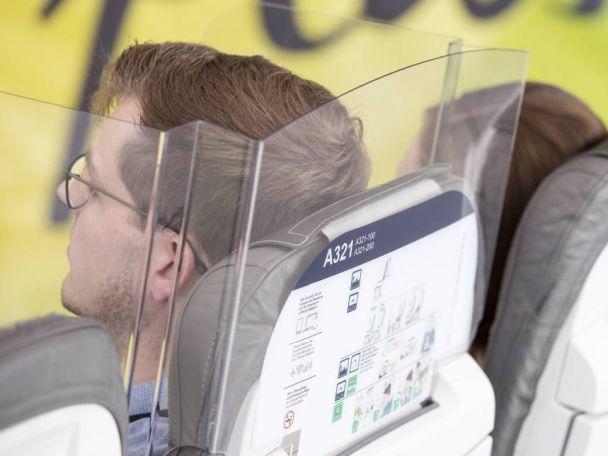
Lufthansa Technik targets middle seat dividers
Lufthansa Technik, (LHT) in cooperation with Krueger Aviation GmbH, have designed seat dividers for the middle seat, which they claim to safely separate passengers in one row. According to LHT, the divider is “inserted in the magazine compartment of the seat and then clicked on the table mounting. No further modification of the seat is required. One shipset of dividers can be installed within few hours during a night shift.”
Made of polycarbonate, LHT says they are “very light adding minimum extra weight. Airflow tests already proofed that the shields prevent aerosols to spread. Besides, the dividers have no impact on the beneficial ventilation of the air condition.
The companies are in the process of acquiring an supplemental type certificate), which is expected to be “available in two to three months.”

Avant offers lower cost IFE system
Avant Aerospace now offers a portable IFE system from AdonisOne for customers who are looking for a lower cost way to upgrade their entertainment systems, without excessive aircraft downtime.
The AdonisOne system does not require internet, as it is a self-contained, portable unit that only requires Wi-Fi. The unit is unique in the fact that there is no installation cost, no aircraft downtime, no internet charges and no associated maintenance fees, while also providing a GPS-based moving map system with no extra fees or data consumption.
The cost of upgrading an aircraft’s cabin can be significant, specifically for how quickly technology changes, and this small, portable unit can provide a top-quality inflight entertainment option instantly at a fraction of the installed price,” Avant Aerospace John Hardy stated.
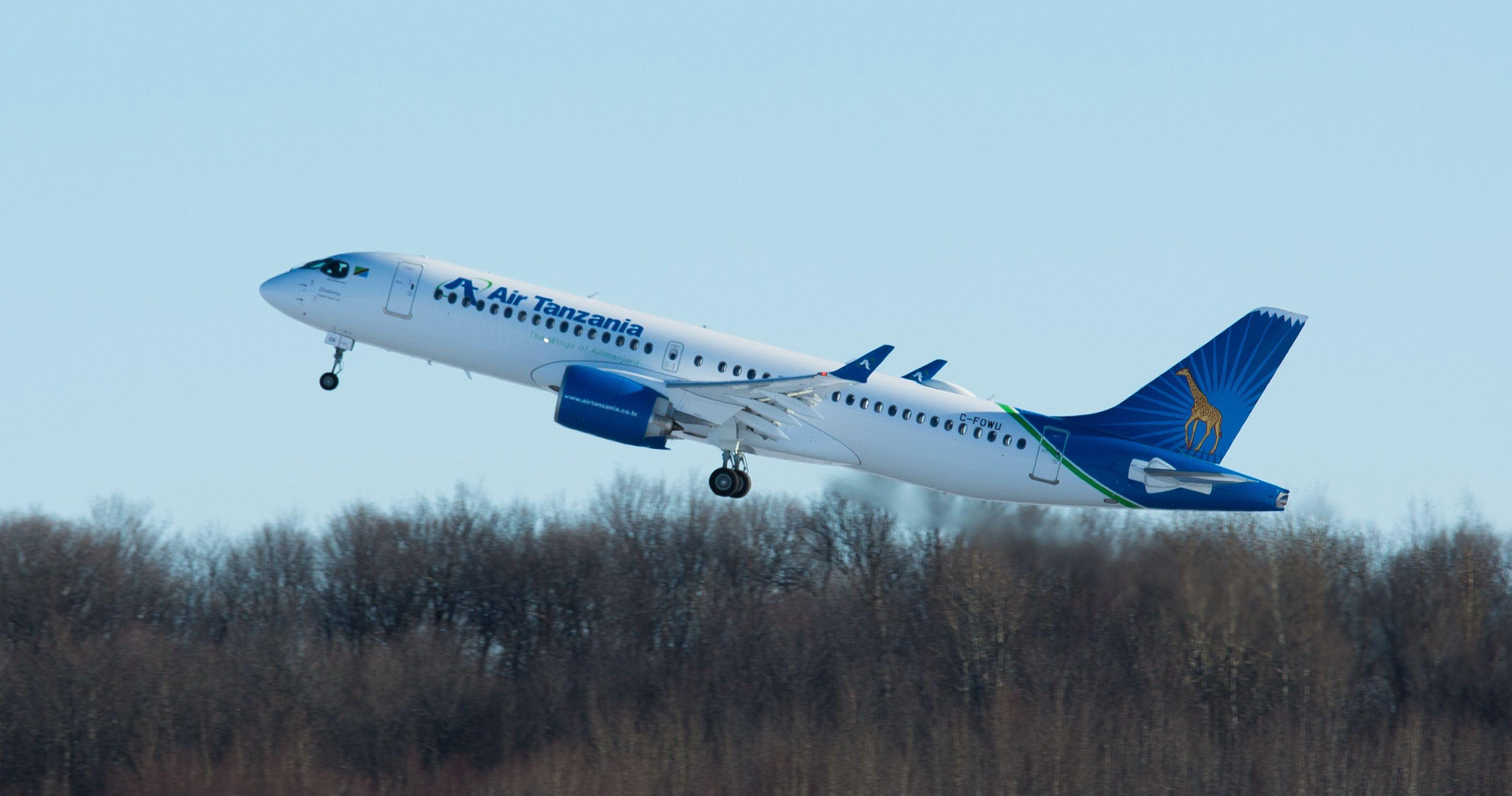
Air Tanzania A220s to be equipped with Panasonic eX1 IFE
Air Tanzania has selected Panasonic Avionics’ (Panasonic) inflight entertainment (IFE) connectivity system to enhance the passenger experience onboard its Airbus A220 aircraft.
The airline has equipped two of its A220s with Panasonic’s eX1 IFE solution which is specifically designed for narrowbody aircraft. Each seat will feature elegant full HD seatback monitors, complete with touch displays and handsets, and an intuitive, personalized interface. Passengers will have access to USB and laptop charging power points at every seat.
Air Tanzania’s A220s will also be fitted with Panasonic’s inflight Wi-Fi service. Panasonic’s next generation connectivity enables fast internet to video streaming, all powered by its new satellite modem featuring bandwidth up to 20 times greater than previously available.

Middle East Airlines’ new A321s to have Panasonic eX1 seatback IFE
Panasonic Avionics has been selected by Middle East Airlines-Air Liban (MEA) to provide inflight entertainment and connectivity (IFEC) solutions for 15 of its Airbus A321 family aircraft.
Upon delivery from July 2020 onward, nine A321neos will become the first connected aircraft to join MEA’s fleet. They will be linefitted with Panasonic’s eX1 seatback IFE solution, designed specifically for narrowbody aircraft.
eX1 features full HD seatback monitors, complete with touch displays and handsets, and an intuitive, personalized interface. Passengers will have access to USB and laptop charging power points at every seat as well.
MEA’s A321neos will also be fitted with Panasonic’s inflight Wi-Fi service, with a host of next generation connectivity benefits from fast internet to video streaming, all powered by its new satellite modem that offers bandwidth up to 20 times greater than previously available.
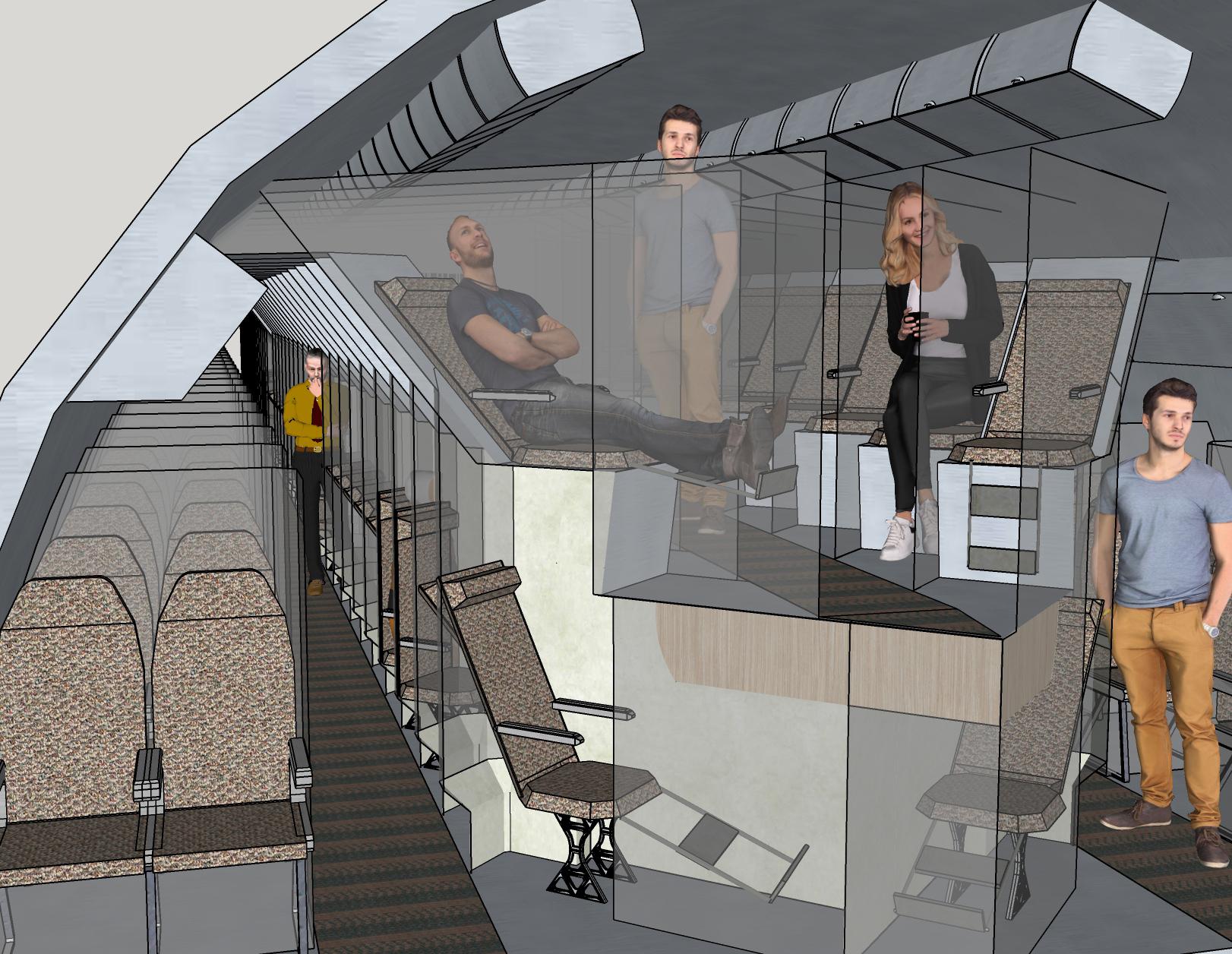
IpVenture unveils semi-private cubicle seats
IpVenture presents innovative solutions to these concerns and more with its staggered seating: arrangements that simultaneously promote proper hygiene in the wake of COVID-19 and create more premium space in the cabin by creatively using the space above the passengers.
With the designs, passengers would have semi-private cubicles, significantly increasing comfort, privacy and accessibility. They can maintain the overall coach seating capacity, provide individual arm rests and more leg room, and increase seat incline to a 45-degree angle.
Rows of seats are set at angles. Seats have their partitions to create individual semi-private cubicles. Attendants can serve passengers, and passengers can access their seats, both without pushing past others.
With these innovations, the company says passengers will be “far better protected from airborne pathogens, even as coach returns to full capacity.” IpVenture has designed this staggered seating to fit inside standard-size fuselages.
IpVenture co-founder Peter Tong told ATW: “Innovation and cooperation are the keys to beating COVID-19. Our new airplane seat designs create semi-private cubicles with more leg room and seat incline. The use of the space above passengers allows airlines to return to full capacity without fear of spreading illness.”

SmartTray receives patents for PED holders
SmartTray International received grants for six additional utility patents for personal electronic device (PED) holders in passenger seats and tray tables for use in aviation, rail, bus, marine and automotive transportation, bringing its total patent portfolio count to eighteen granted patents, of which one is a design patent. Arizona-based SmartTray said its patented mobile device holders “make it more ergonomic, convenient, safer, and easier to use travelers’ smartphones and electronic tablets… significantly enhancing travelers’ entertainment experience on board.”

Molon Labe designs contactless travel seats
Molon Labe Seating has introduced a version of its S2 Economy Class “Stagger Seat” that addresses both physical and respiratory protection.
This design aims to improve the safety of passengers in the post-COVID-19 world while addressing the travel experience to offer more space, adjustable barriers, and optional direct cabin air venting to a passenger’s face. The Denver, Colorado-based company plans to complete the design by the end of 2020.
The design includes:
- A large rotating, one-sided headrest that acts as a physical barrier between passengers, rotating 180 degrees to offer options for passengers traveling with friends and family.
- Staggered layout to increase lateral space whilst reducing contact points between passengers.
- Staggered armrests to further reduce contact points between passengers.
- Patented design that optionally vents fresh cabin air from the seat’s headrest directly toward the passenger’s face with controllable flow rates and direction similar to overhead cabin vents.
- Option for cellphone (Bluetooth) controlled IFE system.
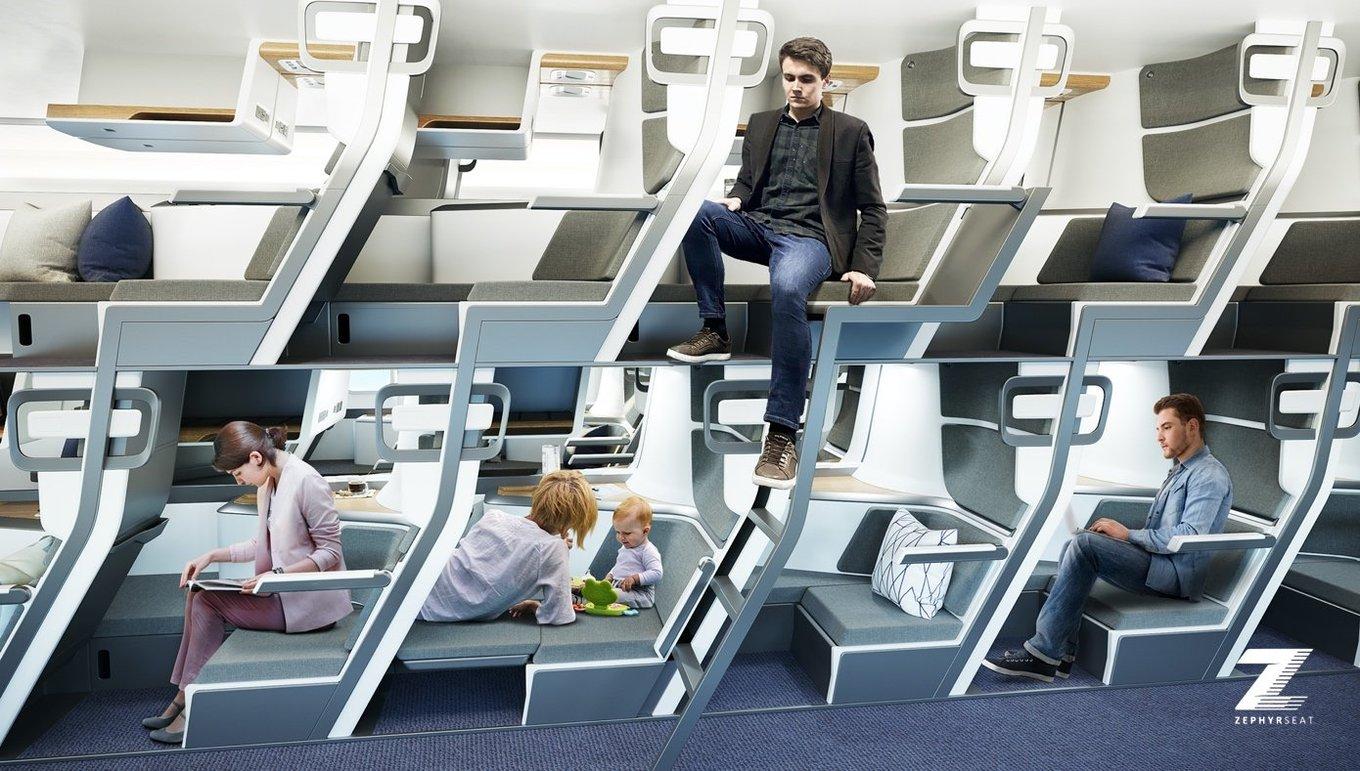
Startup Zephyr Aerospace unveils innovative lie-flat seat design
San Francisco-based startup Zephyr Aerospace has unveiled the ZephyrSeat, which is designed to replace current seats in the premium-economy cabin on ultra-long-haul flights aboard aircraft types including the Airbus A350, A380, Boeing 777s and 787. The ZephyrSeat, which is in the certification process, is essentially a double-decker, similar to a bunk bed. It allows premium-economy passengers to lie flat on ultra-long-haul flights and—because it is in a stacked configuration—maintains the same seating density in the aircraft, so the airline doesn’t have to give up any seats.
Zephyr said the design “increases capacity by 20%+ on long-haul aircraft and reduces costs by ‘unbundling’ expensive meals, baggage, and other premium amenities, offering the lowest price in the industry for a lie-flat bed.” The company, which is looking for a launch customer, estimates a three- to five-year certification process.

RAS Completions unveils personal protection window
London Biggin Hill Airport-based aircraft interior and exterior specialist, RAS Completions, has revealed an aircraft personal protection shield that allows airlines to keep the middle seat available for passengers.
Endorsed by UK GPs, RAS Completions’ Personal Protection Window (PPW) is designed to shield passengers from lateral person-to-person droplet transmission, particularly when used in conjunction with IATA-endorsed biosecurity measures, such as face masks. Made from transparent aircraft-approved polycarbonate and fixed to the back and sides of seats, it will enable airlines to safely resume service without removing or blocking out the middle seat.
The PPW is undergoing EASA approval and is expected to be ready for aircraft use as early as mid-June.
The new PPW can fit on all types of seat, whether economy or premium economy, allows the seat to recline and can be adjusted for children and larger adults. It does not interfere with safety procedures and the installation process is straightforward, meaning airlines will not need to reconfigure their aircraft interiors.

Aviation Glass creates specialized glass screens
Dutch company Aviation Glass has developed specialized glass screens that can be fitted onto the existing commercial aircraft so passengers and crew can fly safely in the post-COVID-19 environment. According to Aviation Glass, the special tempered and laminated glass can be used for screens, fitted between seats, and meet the stringent requirements imposed in the aviation industry as well as pass the safety regulations of the European Aviation Safety Agency (EASA).
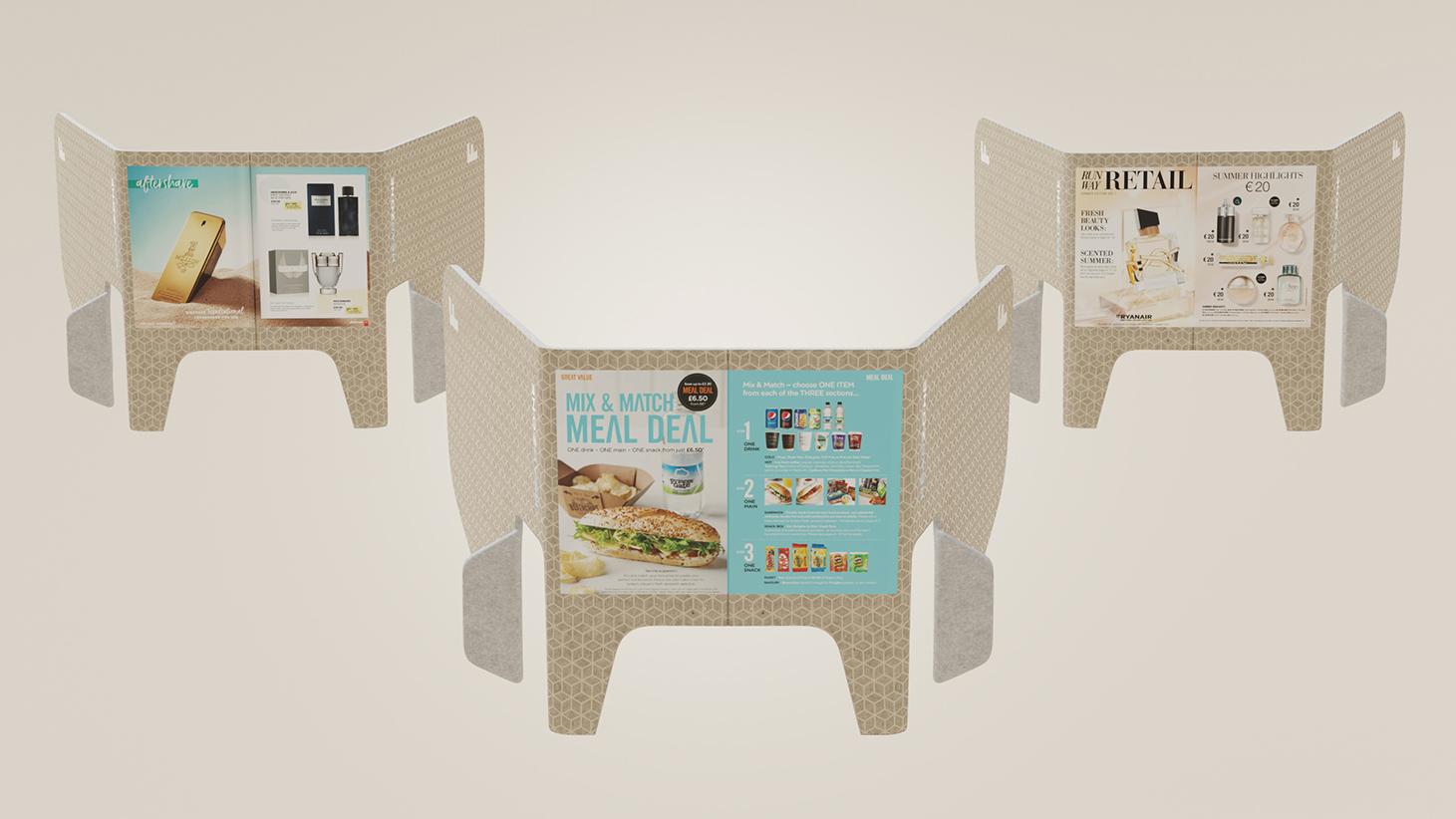
Factorydesign HeadZone gives passengers space, flexibility
Factorydesign has come up with a new innovation for passengers to have some control over their personal space in high-density economy cabins. HeadZone—a foldable, cardboard product slips over the back of the seat. Easy fold-out ears reinforce the side head supports and provide the flexibility required for different seatback thicknesses. It can also be easily recycled.
According to factorydesign, HeadZone would be purchased by the passenger within the terminal, or supplied by the airline as part of a flight/travel purchase on boarding. There are opportunities for branding, sponsorship and high impact advertising, which may also allow companies to provide it free to customers.
“This is not about changing the inherent nature of the cabin interior, but creating a considered personal add on—giving the passenger some control over their personal space.”

[SPONSORED] SOCOMORE is helping the aerospace industry find its new rhythm
Aircraft storage and long-term parking has unfortunately become a reality for most of the world’s airlines dealing with harsh weather conditions.
Thanks to our experience, SOCOMORE has assembled a product line to consider for protecting your assets while the industry waits for air travel to regain its momentum.
SOCOMORE has a full range of aircraft TPC and CIC/CPC products for aircraft long-term storage, and deep cleaners / alcohol SatWipes for cabin interior / exterior airframes and work stations.
SOCOMORE is helping the aerospace industry find its new rhythm.
Learn more at: https://www.socomore.com/our-solutions/
Douglas Tomkins
Based in Montreal, North America.

Adient Aerospace unveils Aspect single-aisle business seat
Adient Aerospace, which is partly owned by Boeing, is launching a new lie-flat business-class seat for narrowbody aircraft. The new product, which was scheduled to be unveiled at the Aircraft Interiors Expo in April, is now promoting it directly to selected airlines in the aftermath of the COVID-19 pandemic.
According to Adient, the unique design “addresses the need for passenger separation and privacy, direct-aisle access and generous bed dimensions.

Images In Motion builds patents live TV-over-IP delivery solution
Singapore-based content service provider Images In Motion has built a Live TV-over-IP delivery solution for airlines that offers visible bandwidth and hardware cost savings. The patent-pending solution, which is branded IIM+, enables airlines to receive live television broadcast feeds through their existing IP connectivity. The key component of the platform is IIM’s patented signaling server technology, which yields a 75%-90% saving on traditional data consumption while requiring no additional hardware.
“Post-COVID-19 there will undoubtedly be changes in the IFE industry but one thing that won’t change is the development of broadband connectivity, aligning the onboard passenger experiences with what passengers’ experience at home,” Images In Motion CEO Ong Yong Beng said. “Adopting our solution will create a new type of inflight entertainment service, one that minimizes OPEX costs while adding a Live TV-based service which is instant, route-specific and which works simultaneously on both embedded systems and PEDs.”
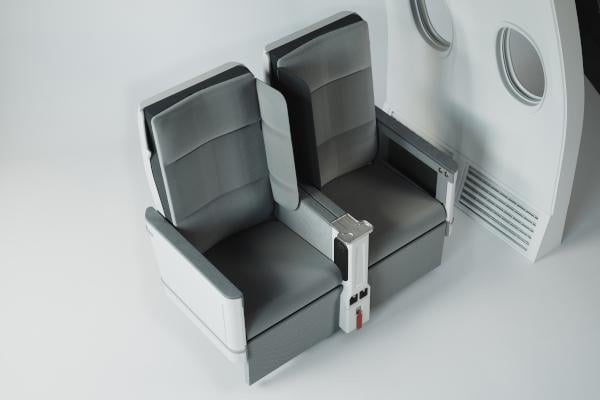
Safran, Universal’s Interspace economy seat wings add protection
Aerospace manufacturer Safran and transportation technology company Universal Movement have partnered to bring the Interspace seat technology to market. Interspace improves premium economy passengers’ comfort by utilizing two easily deployable padded wings that fold out from the seat back. These padded wings allow passengers to rotate and lean on a cushioned surface, thereby providing greater lateral support. The system is retrofittable, allowing airlines to fit the Interspace technology onto a fleet without replacing existing seat units.
“Interspace is a great innovation for privacy of passengers, even more so in the post-COVID-19 travel environment that’s ahead of us,” Safran Seats EVP-strategy & innovation Quentin Munier said.
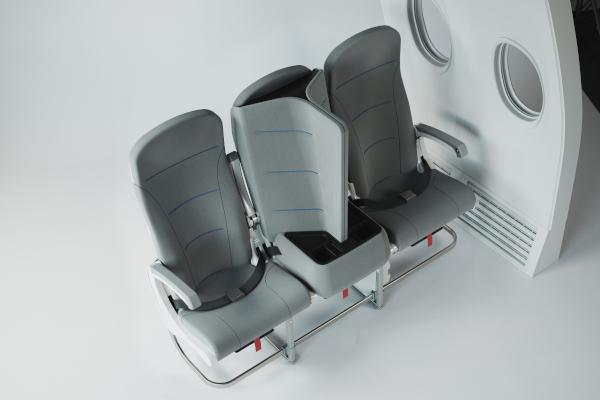
Interspace Lite design offers privacy, flexibility in economy
Safran Seats and Universal Movement are also working on an equipment adaptation called Interspace Lite, which gives airlines flexibility to easily reconfigure their economy cabins, by providing delineation and privacy between passengers by locking out either the central or outboard seats of a row.
Universal Movement founder Luke Miles said, “With the travel industry severely affected by the spread of coronavirus, we have also sought to provide a solution through the Interspace Lite solution that could allow airlines to get back on their feet much sooner than if standard aircraft seating were to remain the same.”
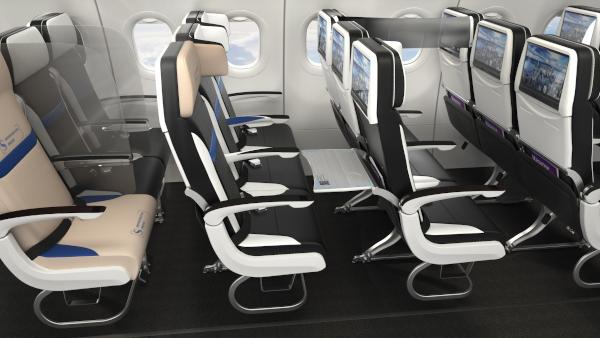
Safran Seats enable passengers to ‘Travel Safe’
Safran Seats has developed “Travel Safe” by Safran Seats, a broad set of patented solutions that are articulated around three families of objectives: social distancing without loss of density, touchless interactions and virus-free surfaces. To respect social distancing, Travel Safe offers equipment such as a Ringfence, a simple & efficient removable partition that isolates neighboring passengers. Likewise, Travel Safe touchless interaction equipment is touchless door actuation or pedal actuation of backrest recline. Finally, virus-free innovation incorporates a wide set of seats and tray table coating range that facilitates disinfection and cleaning.

Vision Systems launches barrier solution against COVID-19
Vision Systems has created a light, compact and transparent separation between passengers with the aim of avoiding contact and possible transmission of viruses, helping to preserve all passengers’ health. The system not only provides a physical barrier but also comprises an anti-germ treatment.
The company’s quick-split solution offers passenger protection at each seat, maximizing passenger load factor as it eliminates the need to leave an empty seat between two passengers.
to the company, the roller system is “durable and robust, it does not generate additional vibrations and it includes a tear-resistant screen. It uses an aeronautics certified technology. This plug-and-play solution is quick and easy to mount and dismantle without modification of the existing seat and is adaptable to any type of armrest. Furthermore, it does not degrade any part of the seat once removed. It is also easy to clean.”
Vision Systems says the barrier system is customizable in shape and dimension of the screen to meet the specific requirements of each airline.

AIM Altitude serves up ARCA boxed-meal system
Prior to the COVID-19 pandemic, AIM Altitude was already working on a new galley system, ARCA, to address emerging meal-service requirements arising from passenger demands and environmental considerations. In light of the COVID-19 pandemic, however, ARCA also enables passengers and crew to enhance hygiene and maintain social distancing.
The ARCA boxed-meal system contains the hot component in one sealed box and the cold constituent in another, rather than crew having to handle each element of the meal. A total of 48 boxed meals fit into a lightweight trolley. As the crew serve the meal, they take the hot box from the top and the cold box from below and simply snap them securely together. Each box is marked with the corresponding seat number. This enables pre-ordered, customized meals to be safely distributed with minimal handling or contact with passengers.
ARCA’s boxed system requires only a lightweight trolley, which means that the footprint and structure of the galley no longer needs to be based on the bulky conventional cart. Along with eliminating the huge volume of empty space created by traditional meal trays, this means that ARCA can achieve space-savings equivalent to an extra row of seats: space that could now be utilized to provide greater social distancing in the cabin, or to allow for the installation of hygiene stations.

IdeaNova’s Inplay IFE Portal limits contact while keeping everyone connected
IdeaNova technologies is transforming how passengers use inflight entertainment to overcome some of the latest challenges brought about by the coronavirus pandemic by keeping both passenger experience and safety as their priority. The software company’s Inplay IFE Portal limits contact in multiple ways, but also keeps everyone on board connected.
First, the chat feature allows passengers to message flight attendants and receive PA announcements as needed. This reduces the number of trips flight attendants need to make around the cabin as well as in-person communication, while still tending to passengers’ needs.
The Inplay IFE Portal also integrates the usual airplane magazine and shopping catalogue that is otherwise found in the backseat compartment and shared by multiple passengers. This decreases the spread of germs and is a more sanitary solution for all passengers onboard.
Finally, and perhaps the most important feature, is that passengers are able to do all of the above on their own device: tablet, phone or laptop because Inplay Portal is accessible through their own devices brought aboard, eliminating the need for seatback display use.
With post-COVID-19 travel regulations, the platform can also display travel, health, and safety guidelines upon startup of the IFE to keep passengers up-to-date on how to protect themselves and others.
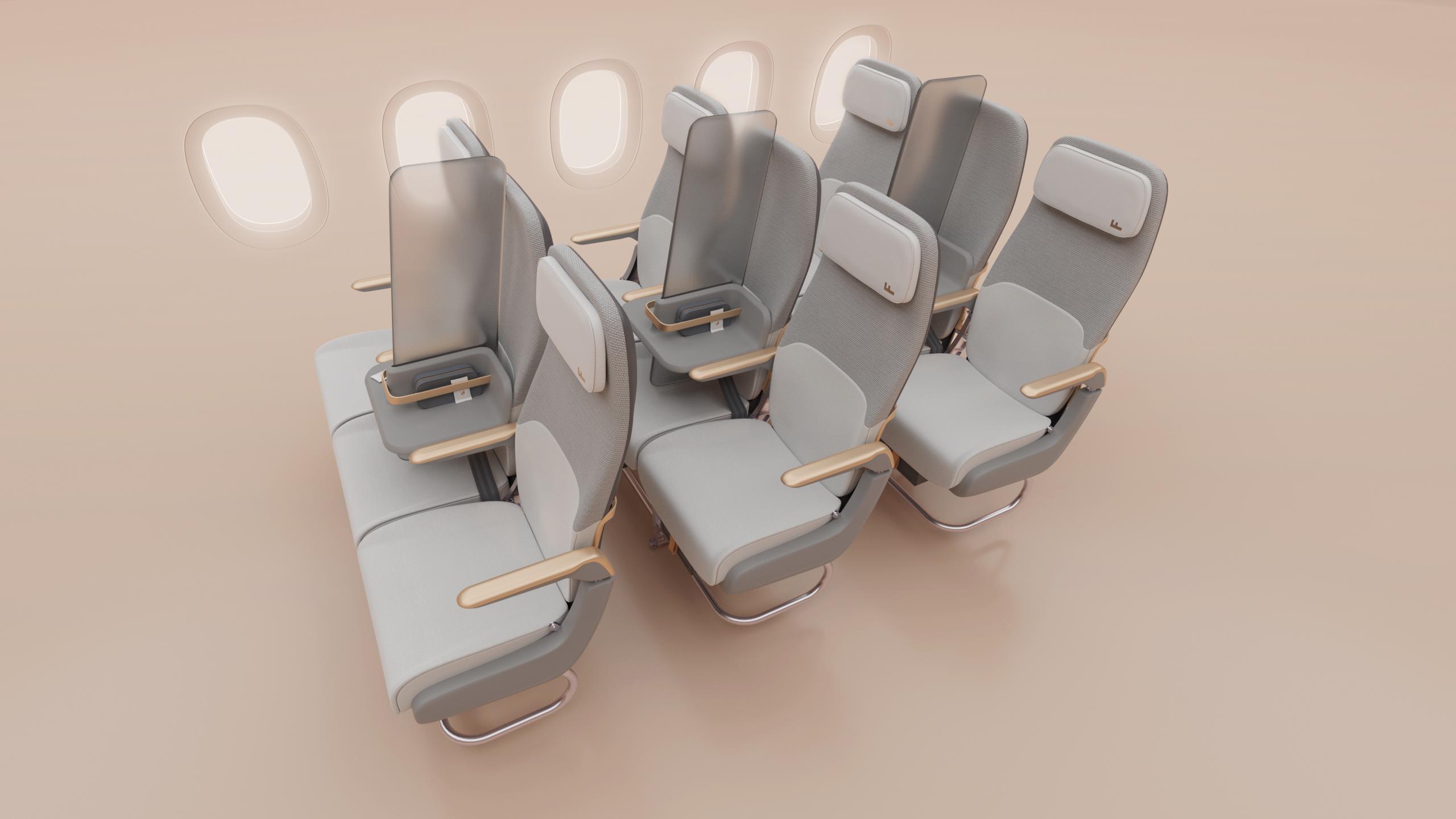
Factorydesign ‘Isolate’ screen concept
As airline travel begins to ramp up in the post-COVID-19 era, London-based design consultancy Factorydesign is proactively innovating economy cabin designs that include enhanced privacy and hygiene in the economy cabin to reassure passengers their health is protected while onboard.
According to Factorydesign, reduced passenger loads will free up opportunities to adapt existing cabins to address this new normal in the short- to medium-term as middle seats remain empty due to physical distancing.
While still in early development, Factorydesign said the Isolate kit “transforms the middle seat into a reassuring screen to provide maximum personal space and separation for adjacent passengers.” The lightweight tabletop supports a vertical screen in translucent thermoplastic to allow light to pass through and maintain an airy cabin. The whole feature is supported by the armrests and securely belted into position.
The kit disassembles easily for stowage and has been designed so that it can be retro-fitted to any existing economy seat, making it versatile to be fitted to single-aisle and twin-aisle aircraft.
“The Isolate kit provides the reassurance and confidence necessary for passengers to return to their previous travel patterns,” according to Factorydesign.
The kit of parts also has a life after the COVID-19 era where it is a way to transform short-haul economy class seats into a business-class offering.
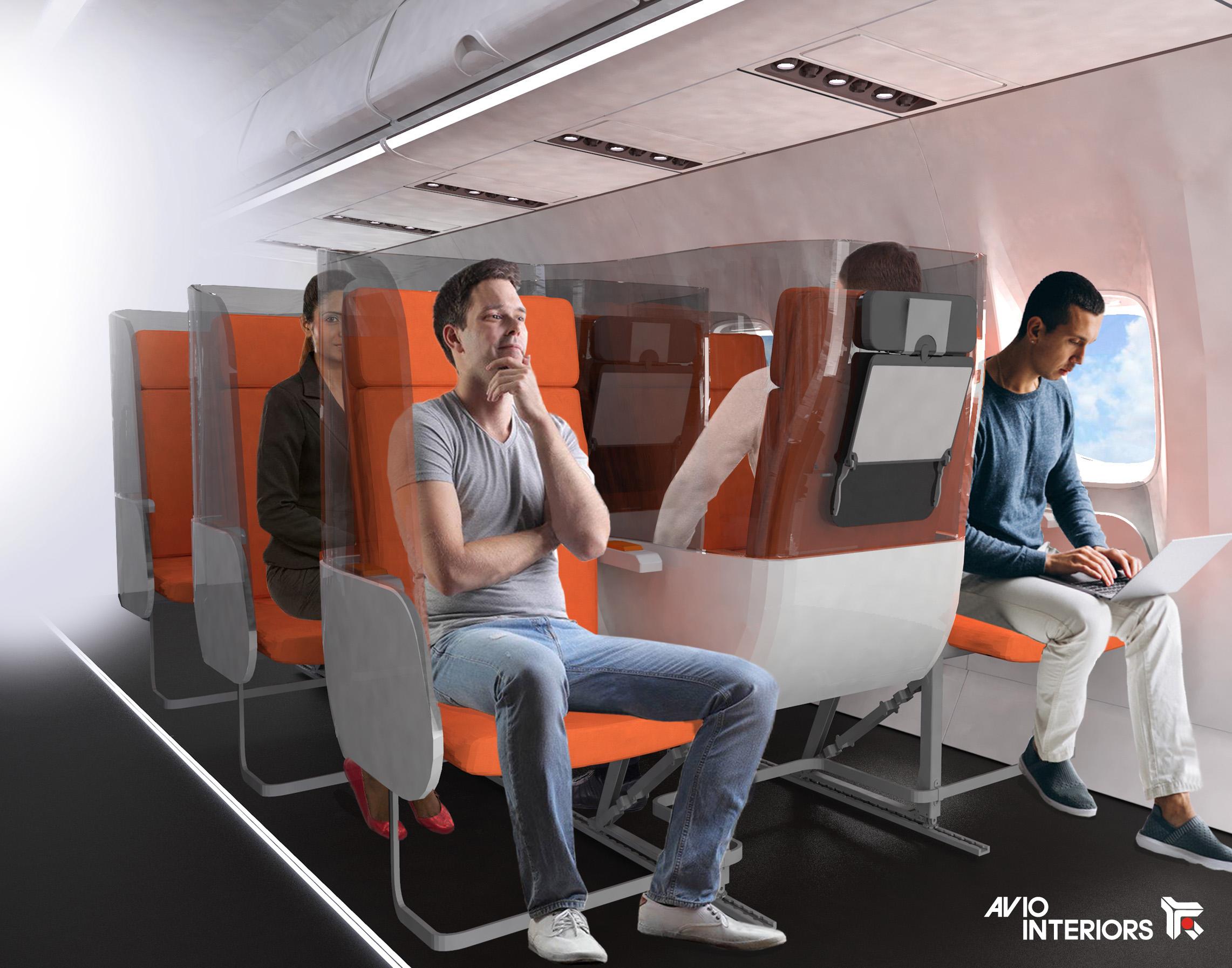
New ‘social-distancing’ seat designs
Italian aircraft-interiors specialist Aviointeriors unveiled two social-distancing seat designs, aimed at safeguarding against COVID-19 contamination, which could be available within a short timeframe.
The two designs include a booth-like transparent shield that can be retrofitted to existing seats and a new economy-class layout, with a backward-facing middle seat.
Naples-headquartered Aviointeriors said the “already designed and industrialized solutions” can be supplied in “a very short time,” even if airlines require customization.
The retrofit shield kit, branded as “Glassafe,” acts as a transparent barrier between passengers, without incumbering seat-back amenities, such as tables, magazine pockets and coat hooks.
Aviointeriors said Glassafe is easy to install, remove and clean, and can be supplied in different degrees of transparency, right through to opaque.
Meanwhile, the “Janus” seat—named after a two-faced Roman god—is a row of three economy seats, with the middle seat reversed. This design also comes with a protective shield, maximizing passenger separation.
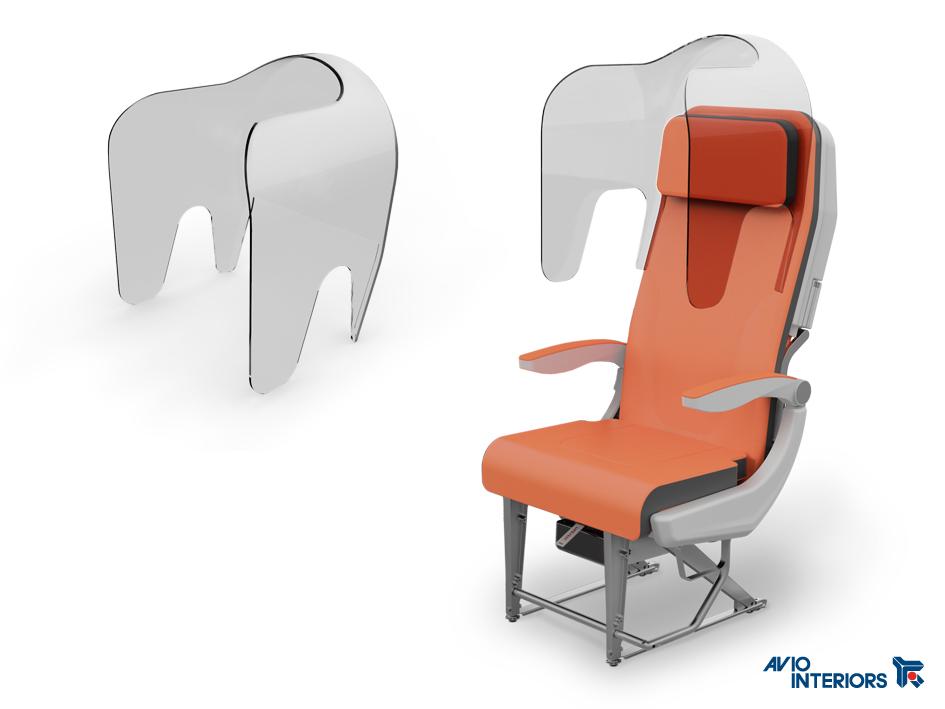
New ‘social-distancing’ seat designs [2]
Aviointeriors’ retrofit shield kit, branded as “Glassafe,” acts as a transparent barrier between passengers, without incumbering seat-back amenities, such as tables, magazine pockets and coat hooks. Naples-headquartered Aviointeriors said Glassafe is easy to install, remove and clean, and can be supplied in different degrees of transparency, right through to opaque.

Jamco America introduces soft divider
Jamco America, one of the most experienced interior products suppliers and turnkey aircraft interiors integrators in the industry, has announced the new leather-wrapped Jamco Soft Divider, a soft eyebrow-type hanging divider with a simple and elegant design that enables maximum seat density. The new Jamco Soft Divider is designed for narrowbody single-aisle aircraft.
“The new Jamco Soft Divider has an increased surface area from the previous hanging divider to allow additional separation from the rear passengers and the forward passengers,” said Kristi Dutson, Director of Sales and Program Management at Jamco America. “As a result, the spread of germs between cabin classes is reduced, increasing passenger safety.”
According to Jamco, the divider is “ideal for creating a physical separation between aircraft business and economy classes, the Jamco Soft Divider allows for additional legroom or in some cases an additional row of seats, depending upon aircraft configuration. It offers easy installation and seamless integration with existing header provisions certified for current Boeing 737 divider systems and is scheduled to be certified for the Airbus A321 later this year.
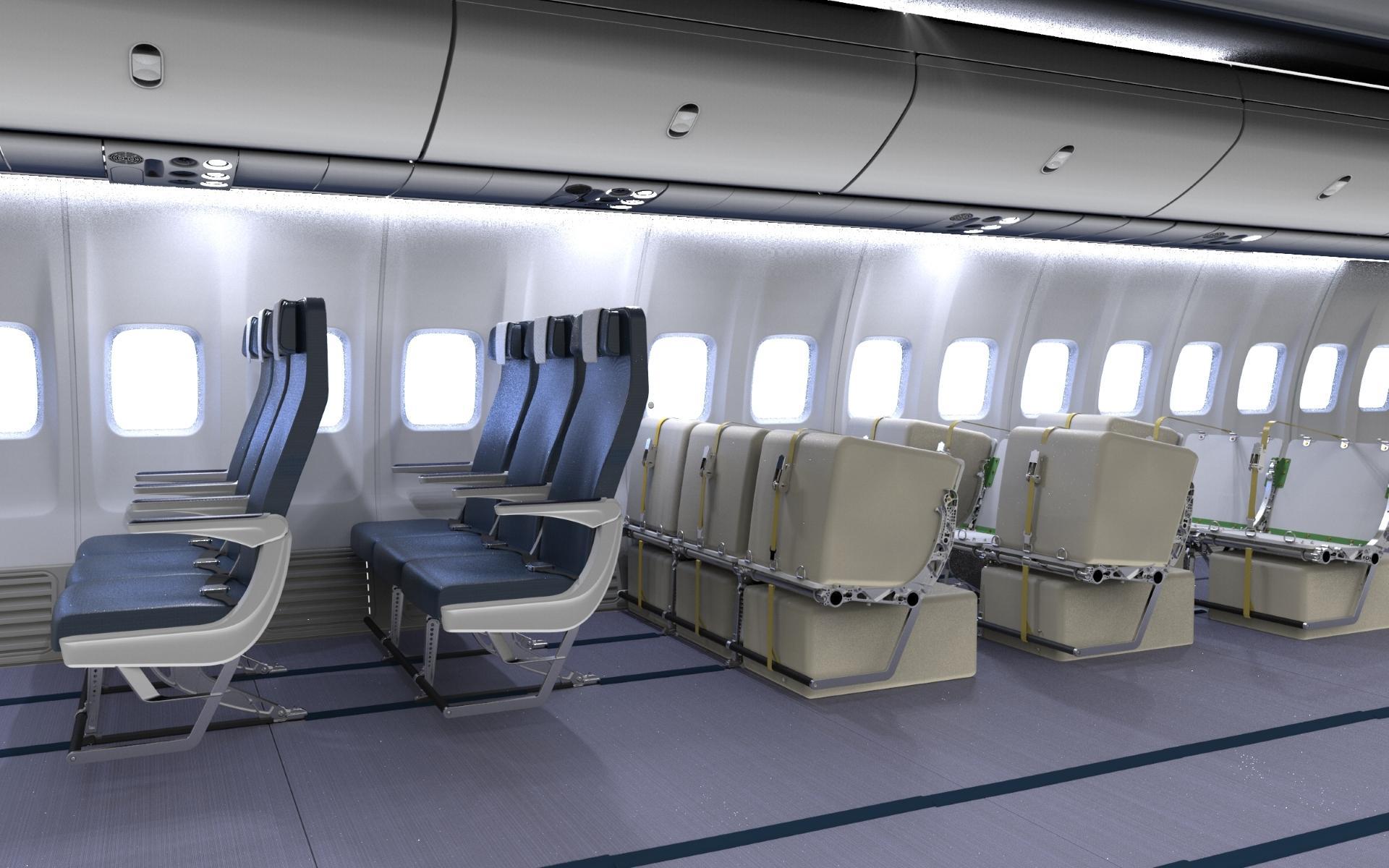
HAECO fast-tracks storage solutions for passenger-cargo flights
HAECO Cabin Solutions is fast-tracking development of several products designed for carrying freight in passenger cabins, as the company responds to a surge in cargo demand as passenger-aircraft belly capacity reduces during the coronavirus pandemic.
Two of the products can be used without removing seats: one goes on existing economy seats, and one goes in rows between seats. Each can carry 240 lb., the North Carolina-based HAECO Group subsidiary said. A third product installs in economy-seat tracks and can handle 500 lb., while, and a fourth, “palletized” unit sits on the cabin floor and can take up to 1,000 lb. The four units can be mixed on a single aircraft to optimize capacity while ensuring load distribution complies with aircraft manufacturer guidance.
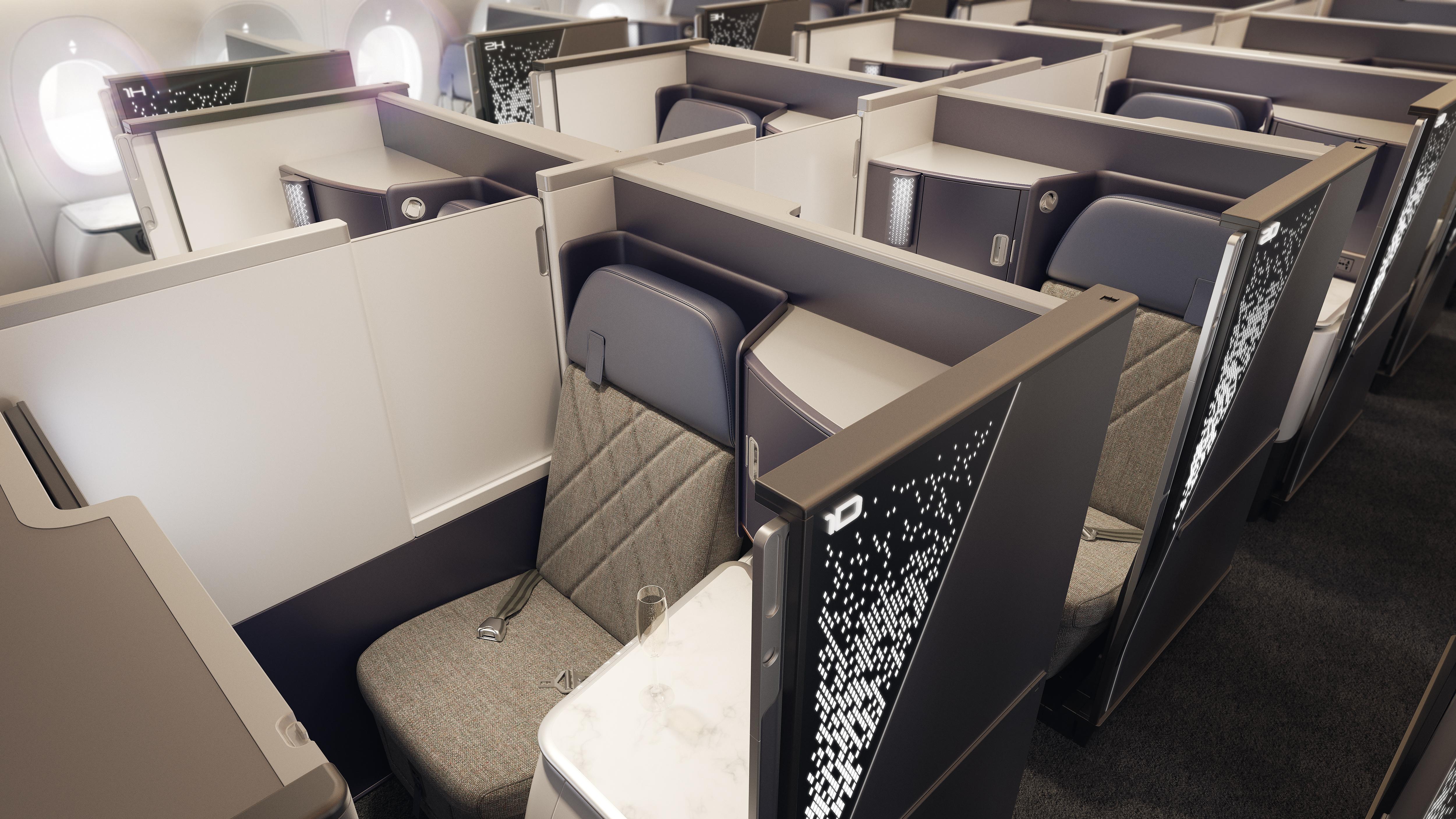
Collins Aerospace introduces new A350 Business-First seat
Collins Aerospace’s new Business-First seating product, Horizon Premier, entered service on Aeroflot’s new A350 fleet in March 2020.
Designed as a more luxurious business-class product, Horizon Premier was developed to bridge the gap between traditional first- and business-class seats, creating a top-tier business offering with a luxury footprint.
The forward-facing suite combines privacy doors as standard which, when combined with the higher walls and latest generation discreet actuation technology, provide passengers with a well-appointed private space for working, dining and resting. Seamless IFE integration, ambient lighting, device-charging ports and extensive stowage coexist within the suite’s generous living space giving passengers a first-class flying experience in a business-class cabin.
The new suite enables all-aisle-access seating and features a roomier bed and the latest generation 21-inch monitor. Airlines will appreciate various trim and finish customization opportunities, including accent lighting, materials and colors. An illuminated privacy door panel option is a distinctive feature that enhances cabin ambiance and provides brand differentiation for airlines.
Horizon Premier is fully certified and available for multiple widebody platforms. It launched on the Airbus A350, but is also compatible with the A330 as well as Boeing’s 777 and 787 platforms.
In addition to the existing A350 order with Aeroflot, Collins Aerospace is working on a follow-on order with an undisclosed customer.

DLR program to digitally link cabin design, fuselage concepts
German aerospace center DLR launched a research program that could allow design of future commercial aircraft to begin with the passenger cabin. The project aims to create digital links between cabin design and fuselage concepts. The three-year Innovative Digital Cabin Design (InDiCaD) project will involve multiple DLR institutes involved in air transport research, flight systems, materials, aerospace medicine and product virtualization as well as composite structures and adaptive systems. InDiCaD will develop digital methods for fully visualizing the cabin as a virtual project and assessing its potential. A database of potential cabin designs will be available by the end of the project in 2022. This could include concepts such as reconfigurable cabin modules or using the underfloor areas in the fuselage for cargo or the flexible transport of additional passengers.
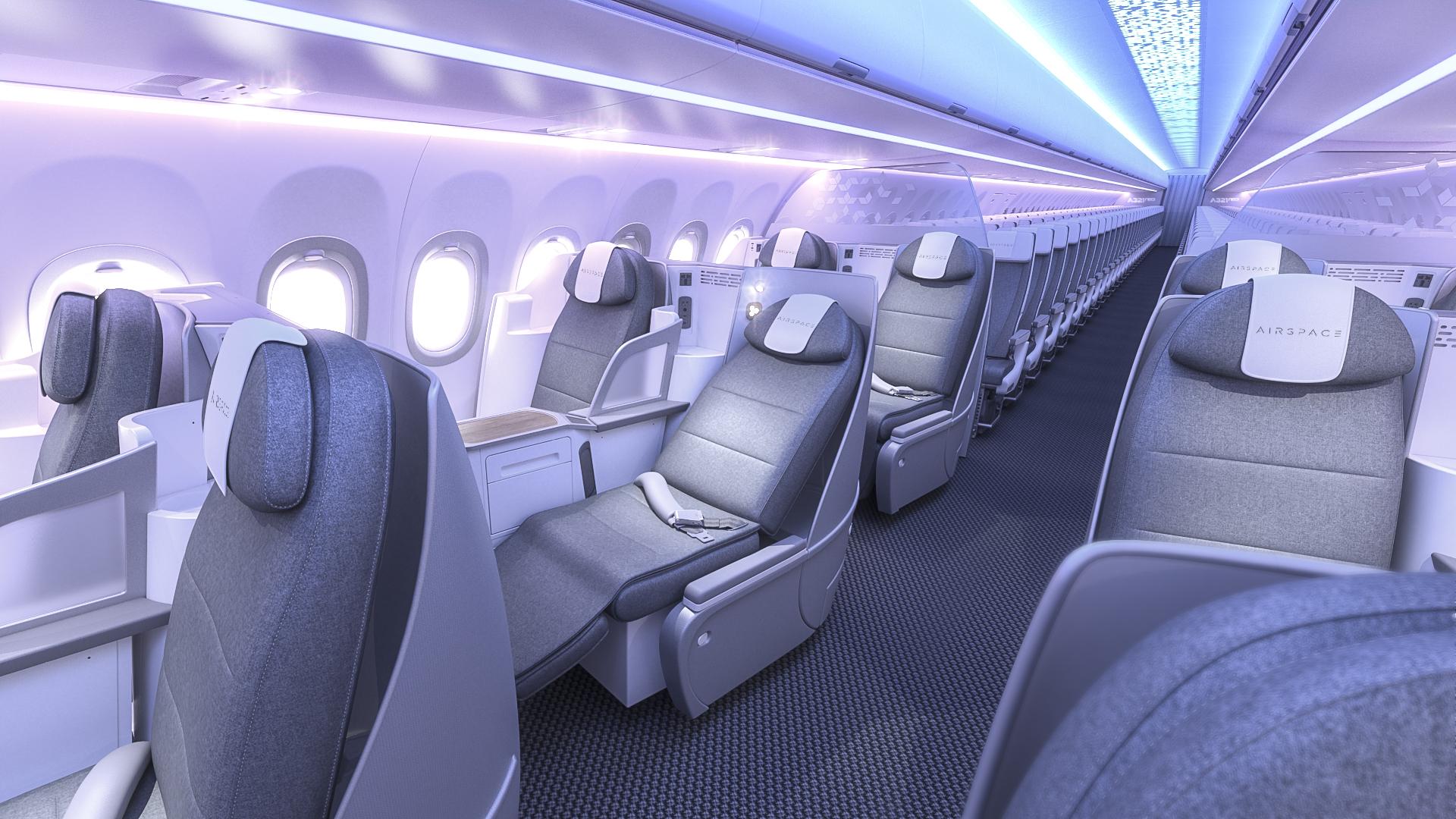
Airbus offers wider choice of business-class products
With the emergence of longer-haul narrowbodies, like the Airbus A321LR and A321XLR, Airbus aircraft interiors marketing director Florent Petteni said airlines are looking to create a consistent customer experience with their widebodies.
“Airlines require equivalent levels of comfort, as well as a consistent cabin branding, compared to what they are flying today in their widebodies, especially for their business-class passengers. We are working with different seat suppliers to have a wide choice of business-class products that we can install on the A321LR and A321XLR,” he said. Airbus responded to this shift by extending its Airspace cabin—originally designed for the A330neo and A350—to the A320 family.
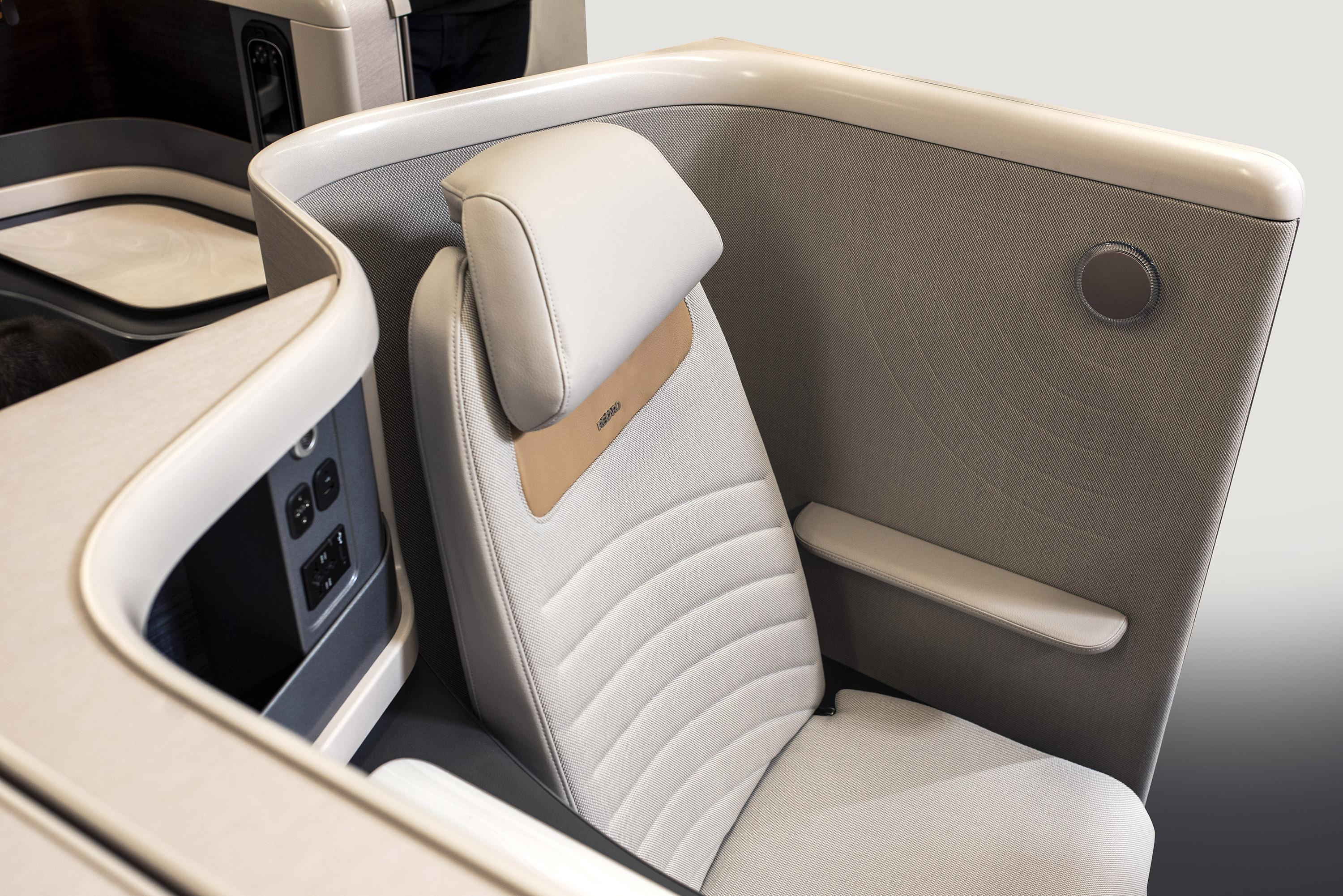
Recaro sees increasing interest in business-class designs
Recaro Aircraft Seating CEO Hiller said airlines are demanding greater choice, with a focus on privacy and flexible work-sleep spaces. “Business-class cabins have improved significantly in recent years,” Hiller said. “What we are seeing is an expanded business class, which offers space for more configurations and opportunities to elevate the business-cabin experience.”
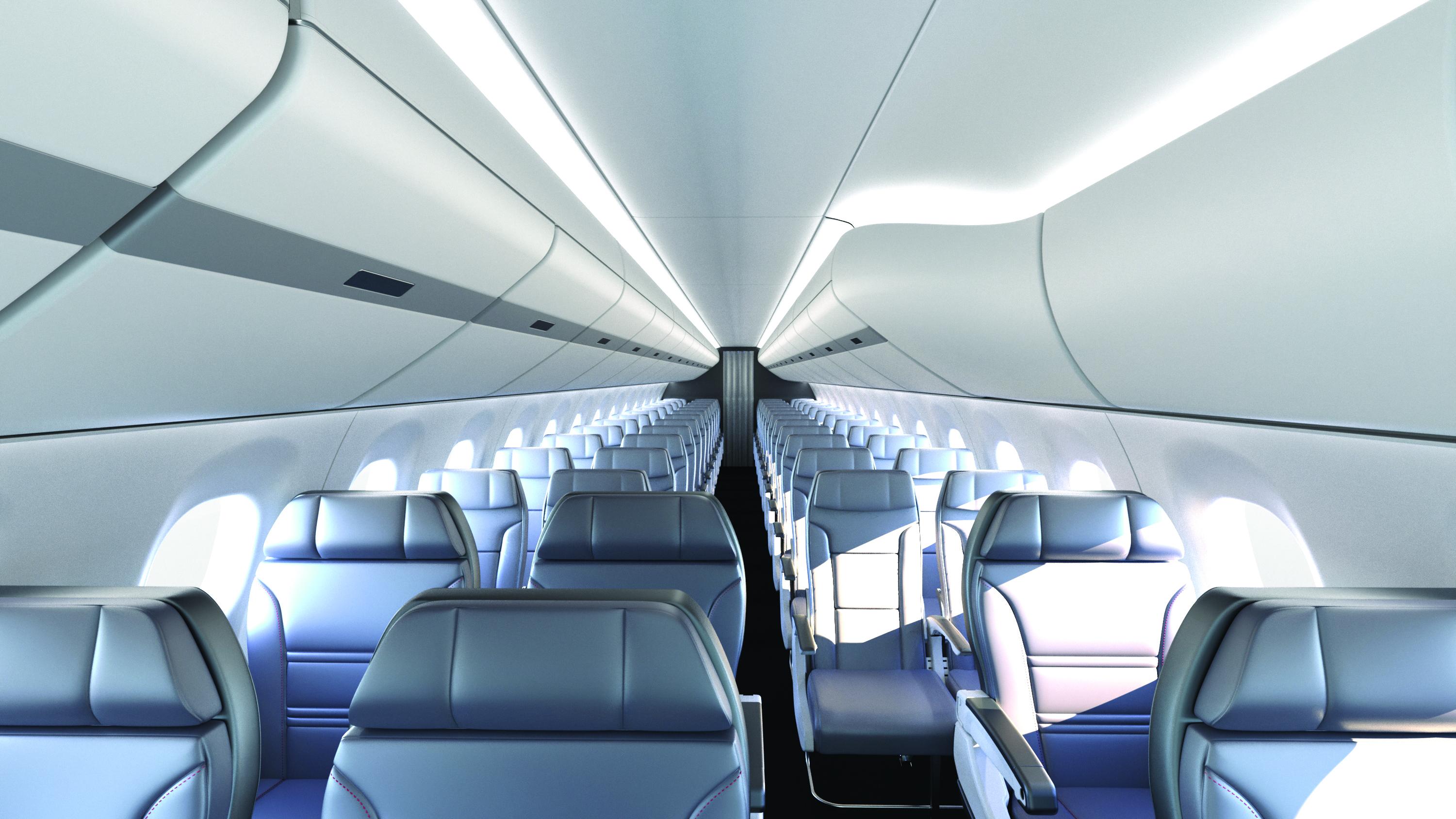
E-Jet travelers see Safran’s bigger carry-on bins
Safran is developing focus on giving first- and business-class travelers “a very premium experience,” which links back to the theme of cross-fleet consistency. Safran VP-marketing Nathan Kwok said the company is “seeing demand for two- and even three-class configurations on regional aircraft. In response, we offer retrofit packages on both E-Jet and CRJ aircraft, with larger bins and larger lavatories, so a passenger who just got off a long-haul flight in business class can continue to bring their carry-on into their connecting aircraft.”
Aircraft cabin manufacturers continue to innovate to develop new cabin designs, and many have responded to what aircraft interiors could look like in the post-COVID-19 environment—particularly in the economy cabin that would enable social distancing between passengers.
Get regular analysis and insights from Aviation Week Network’s award-winning editorial and data teams on technology and business advances impacting the global aviation, aerospace and defense industries
Not a subscriber? Sign up here.

Comments